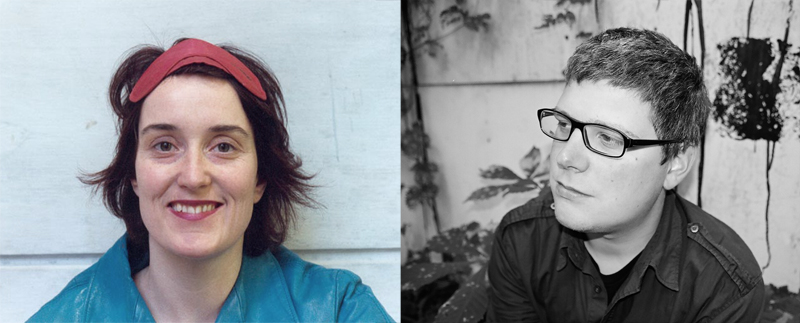Sunday, 06 December, 2009 - 21:00
sololala 2009 (5th night)
Location:
Sophiensaele
Steffi Weismann
Antoine Chessex
Location:
SOLOLALA 2009
06.12.09
20:00
Alvin Lucier: Music for Solo Performer (1965)
performed by Steffi Weismann (CH/Berlin)
21:00
Antoine Chessex Solo (CH/Berlin)
Alvin Lucier: Music for Solo Performer
for enormously amplified brain waves and percussion(1965)
The alpha rhythm of the brain has a range from eight to twelve hertz, and, if amplified enormously and channeled through an appropriate transducer, can be made audible. It can be blocked by visual attention with the eyes open or mental activity with the eyes closed. No part of the motor system is involved in any way. Control of the alpha consists simply of alteration of thought content - for example, ashifting back and forth from a state of visual imagery to one of relaxed resting.
Place an EEG scalp electrode on each hemisphere of the occipital, frontal, or other appropriate region of the performer's head. Attach a reference electrode to an ear, finger, or other region suitable for cutting down electrical noise. Route the signal through an appropriate amplifier and mixer to any number of amplifiers and loudspeakers directly coupled to percussion instruments, including large gongs, cymbals, tympani, metal ashcans, cardboard boxes, bass and snare drums (small loudspeakers face down on them), and to switches, sensitive to alpha, which activate one or more tape recorders upon which are stored, pre-recorded, sped-up alpha.
Set free and block alpha in bursts and phrases of any length, the sounds of which, as they emanate from the loudspeakers, cause the percussion instruments to vibrate sympathetically. An assistant may channel the signal to any or all of the loudspeakers in any combination at any volume, and, from time to time,engage the switches to the tape recorders. Performances may be of any length. Experiment with electrodes on other parts of the head in an attempt to pick up other waves of different frequencies and to create stereo effects. Use alpha to activate radios, television sets, lights, alarms, and other audio-visual devices.
Design automated systems, with or without coded relays, with which the performer may perform the piece without the aid of an assistant.
[Original Prose Score taken from "Alvin Lucier: Reflections", Edition MusikTexte, 1995, Köln, www.musiktexte.de]
Steffi Weismann's Statement about "Music for Solo Performer":
Our making of Lucier's "Music for Solo Performer" went ahead with extensive preparations and technical research. The performance itself, however, is very open to the moment and demands nothing but deep relaxation. When I wrote the concept of the piece, I instantly loved that antagonism and and welcomed the challenge to reduce my performative activities to a minimum. While working out my interpretation I slowly learned to be aware of my mental activities. I acquired a sensitivity for subtle changes in tension and the ability to switch the state of my brain from beta to alpha and back again. Nevertheless, the outcome is not completely controllable. This makes the live act quite thrilling.
Sukandar Kartadinata and I decided to create a real solo version of the piece that will go without the aid of an assistant who usually channels the brainwave signals to particular speakers and instruments. That means that parameters like the occurrence, length and intensity of the alphawaves will be detected in real-time and disseminated randomly through a multichannel system to ten vibrating objects placed in the wide space. All sounds will be generated as amplified live-signals from the 4 electrodes that are placed on my head.
Alvin Lucier noted in his score that alphawaves may activate also visual devices. We decided to operate with the possibility of this extension but to separate it from the sound part: Our version will end silently with the transformation of the brainwaves into light signals using the matrix of the 64 light bulbs hanging above the stage.
Antoine Chessex Solo (CH *1980)
"These days i spend quite a lot of time developing, recording, performing and touring with my solo stuffs… The electric “doom sax” of course, but I also work on an acoustic version where i try to play with the “sonic geometry” of the room im performing in, using mostly low-end drones, multiphonics and circular breathing while moving through the space. A huge influence for that type of work being Tony Conrad who really blew me away when i saw him live a year ago or so and whose music has been an inspiration since then…"
(taken from an interview with Nicolas Malevitsis, http://blog.noise-below.org)


As part of the festival sololala 2009
